Conference Program

Conference sponsor
Day 1 - Wednesday, March 13, 2024
Theater One
Maritime battery short course
09:00 - 12:15
09:00
Part 1. Batteries in the maritime space 101
 Dr Ben Gully
Dr Ben GullyChief technologist
SPOC Grid Inverter Technologies
USA
This first presentation will review the background of batteries in maritime, how and where they are used and why they are different from batteries in automotive and stationary applications. The presentation will cover the different types of batteries – form factor and chemistries and the important parts of the battery to know such as the battery management system (BMS). Moving on, Part 1 will also provide details on battery systems used in maritime space, their chemistry and system design.
09:40
Part 2. Finding a battery solution that works for you
 Dr Ben Gully
Dr Ben GullyChief technologist
SPOC Grid Inverter Technologies
USA
In this second presentation a key theme will be to ensure that hybrid as well as all electric applications are carefully considered and to ask the right questions. The critical importance of operational profile will be stressed and only then, how to choose a battery for that application. The presentation will look at key parts of understanding such as the distinction between power and energy, battery sizing and battery lifetime.
10:20
Part 3. Battery safety and firefighting guidelines
 Syb ten Cate Hoedemaker
Syb ten Cate HoedemakerManaging director
Maritime Battery Forum
Netherlands
This presentation is a must-see for any attendee operating electric and hybrid vessels if for no other reason than to compare notes. The Firefighting Guideline for Maritime Battery Systems has been developed by the Maritime Battery Forum in collaboration with its members including class societies (ABS, DNV, Lloyd's and Bureau Veritas) as well as leading shipyards, integrators, battery suppliers and academic institutions. It provides valuable guidance for creating a firefighting strategy for the battery systems on board hybrid and electric ships. The guideline consists of four parts: a description of the different types of firefighting systems, an evaluation of the different levels of fire related to battery systems, a step-by-step approach to developing a firefighting strategy, and a summary of the firefighting strategy development process.
10:45
Part 4. Battery project implementation and common pitfalls
 Dr Ben Gully
Dr Ben GullyChief technologist
SPOC Grid Inverter Technologies
USA
This final presentation will consider the issues of buying on price alone, the benefits of a bigger battery, the importance of allocating sufficient physical space for ventilation and for hazardous zones, voltage levels. The presentation will also take time to look at power electronics and the importance of considering them before specifying the battery. The course and the presentation will end with a review of classification society processes to ensure that approval is as smooth as possible.
11:20 - 12:15
Maritime battery short course - Q&A with expert panel
 Dr Ben Gully
Dr Ben GullyChief technologist
SPOC Grid Inverter Technologies
USA
 Eileen Tausch
Eileen TauschSenior electrical engineer - research & development
Crowley Shipping
USA
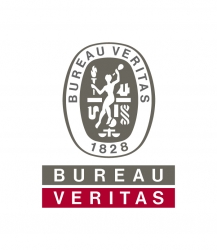 Guillaume Vileyn
Guillaume VileynSenior electricity and fire safety surveyor
Bureau Veritas Marine Inc
USA
 Marinus Jansen
Marinus JansenGlobal marine technology steward
Caterpillar Inc
Germany
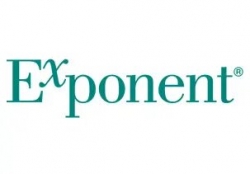 Kevin C White
Kevin C WhitePrincipal scientist
Exponent
USA
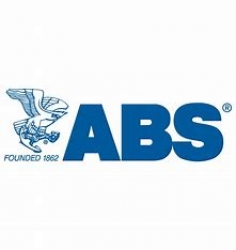 Dr Mejdi Kammoun
Dr Mejdi KammounPrincipal engineer
American Bureau of Shipping
USA
Syb ten Cate Hoedemaker, managing director, Maritime Battery Forum, Netherlands
Theater Two
Shore power and charging
09:00 - 15:05
Moderator
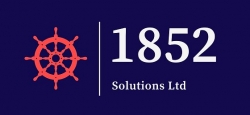 Bo Jardine
Bo JardineAdvisory partner
1852 Solutions
USA
09:00
The reality of shore charging for hybrid & electric ferries
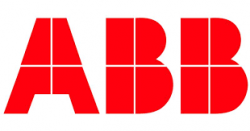 Drew Orvieto
Drew OrvietoSenior manager, passenger vessels, marine and ports
ABB Marine & Ports
USA
This presentation will be a deep dive into the challenging reality of designing, implementing, and maintaining shore charging systems for hybrid & electric ferries. The discussion will include testimonials and real-world charging data from multiple ferry operators spanning a range of vessel types, charging systems, and environmental and operational challenges.
09:25
Plugging in and charging up
 Will Ayers
Will AyersChief electrical engineer
Elliott Bay Design Group
USA
The two biggest challenges for plug-in vessels are how to connect to and store energy from shore. The technical challenges of marine batteries will be covered, but also supplier uncertainties, redesign forced by cell advances and Buy America constraints. For the power plug, even wider options exist, such as manual versus automatic, drop-down versus reach-out and bow versus beam locations. The cost of shipboard and shore-side infrastructure can often exceed that of the batteries or connection systems themselves.
09:50
Operational characteristics and requirements for a four-tug shore-base terminal
 Marinus Jansen
Marinus JansenGlobal marine technology steward
Caterpillar Inc
Germany
This presentation will share a case study on an archetypical four-tug shore-base terminal, focusing on the operational characteristics and requirements of such a marine operation and how that interfaces with the port infrastructure.
10:35
The current and future challenges of vessel electrification
 Jim Andriotis
Jim AndriotisChief technology officer
Cavotec Group
USA
The maritime industry is accelerating its move towards electrification. Many solutions have already been created to bring power from shore to vessel but there is still much to be done. In this presentation we will discuss how some of the current challenges have been solved as well as a look at what the future challenges will be and what is being done to meet them.
11:00
How best to prepare for shore power
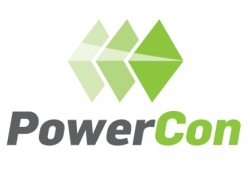 Ralf Nielsen
Ralf NielsenShore power business development manager - Americas
PowerCon USA
USA
This presentation will provide the audience with an overall understanding of the shore power as well as a checklist of specific recommendations for implementing the technology successfully. Besides an overall introduction, the presentation will also provide specific case studies of implemented projects to underline what has worked well and what other ports should take into account when starting on this journey.
11:25
Taking charge: advancing electric propulsion on the Maine Coast
 Sam Belknap
Sam BelknapDirector, Center for Marine Economy
Island Institute
USA
 Lia Morris
Lia MorrisSenior community development officer
Island Institute
USA
Island Institute's Center for the Marine Economy is leading efforts to electrify Maine’s working coast. This presentation will explain how the organization is using a unique set of state and national partnerships, funding strategies to get e-boats on the water. With commissioned reports on shoreside charging infrastructure, fleet efficiency, and workforce centered partnerships with the Community College system to ensure that electric marine propulsion properly takes hold along the working coast.
11:50
AKA’s path to zero emissions
 Jason Aspin
Jason AspinCEO
AKA Energy Systems
Canada
AKA Energy Systems specializes in energy solutions for island and microgrid power systems. With over 27 years of experience, the company has achieved multiple world firsts in hybrid power and propulsion. AKA is focused on leveraging its expertise in energy storage and solutions to drive innovation in the maritime industry toward achieving zero emissions. Jason Aspin, AKA’s CEO and co-founder, will present on the integration of hybrid applications and the
use of zero-emission generator technology. The path for the marine industry to transition to emission-free operations at sea and in port will see the utilization of a range of solutions including port electrification, ship to shore power and the integration of renewable energy sources in both port and vessel operations.
13:00
Charging infrastructure for sub 24m vessels
 Sarah Fear
Sarah FearKnowledge exchange manager
University of Plymouth
UK
 Dr Keri Collins
Dr Keri CollinsLecturer in mechanical engineering
University of Plymouth
UK
At Plymouth, a commitment to Clean Maritime permeates across a wide portfolio of research, from maritime cyber security, marine autonomy and advanced engineering to biological and environmental sciences, the arts, ORE and Big Data. This is Underpinned by strong government and sector collaboration. Taking a transdisciplinary approach to address challenges, Plymouth has been involved in some UK and World "Firsts" for e-vessels and e-charging. This presentation will share knowledge including lessons learned. In particular, what infrastructure has been installed to date, and which lessons have been learned.
13:25
A barge-based approach to lowering harbor emissions
 Michael Complita
Michael ComplitaPrincipal in charge - VP strategic expansion
Elliott Bay Design Group
USA
Ports throughout North America are setting aggressive decarbonization and emission reduction goals. As they explore options for electrification, many of these same ports are subsequently encountering significant if not impossible roadblocks. Permitting delays, construction disruption, unreliable grid power and fluctuating energy costs are just a few of the many challenges that must be addressed. Elliott Bay Design Group has developed a patent-pending alternative to conventional shore power, offering ultimate flexibility to serve both ocean-going vessels and smaller harbor craft. This mobile barge-based approach is uniquely capable of offering shore power to ships at berth and at anchor as well as fast charging all-electric vessels directly in the field where they operate. In addition, it offers lower full-cycle emissions compared with grid power, has no construction disruption or shoreside permitting requirements and is cost-competitive.
13:50
Electrification simplified
 Peter Brooks
Peter BrooksOEM account manager, marine and port solutions
BAE Systems Inc
USA
 Boaz Chai
Boaz ChaiDirector, DC products and platforms
ChargePoint
USA
This presentation will provide attendees with a review of the simplified approach to battery-electric power and propulsion solutions made possible with the adoption of the megawatt charging system (MCS).
14:15
Solving the challenges of electric express vessels - Norway as a case study
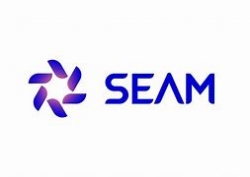 Pål G Eide
Pål G EideR&D manager
Seam
Norway
This presentation will review three different perspectives in the electrification of express vessels in Norway: Autonomous battery swap; high-speed charging; and weight optimization solutions - each with specific vessel examples.
14:40
Angel Island ferry electrification
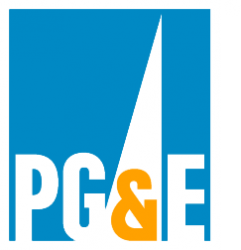 Dean Kunesh
Dean KuneshEV customer programs - clean energy transportation
Pacific Gas and Electric Company
USA
This presentation will review the project to electrify the Angel Island Ferry. This presentation is a new addition to the program and so the exact scope and details of the presentation will be defined shortly.
Theater One
Port and infrastructure projects
13:00 - 17:00
Moderator
 Teresa Bui
Teresa BuiClimate policy director
Pacific Environment
USA
13:00
Short-distance ferry service electrification under CARB regulations
 Alex Kryska
Alex KryskaCOO
Prop SF
USA
Prop is establishing a flexible and scalable private ferry service that operates throughout the San Francisco Bay Area and beyond, with a fleet of innovative vessels, strategically engineered to facilitate large service areas. In 2022, PropSF began a new passenger ferry service between San Francisco and Treasure Island. By January 2026, the service will be required by the California Air Resources Board (CARB) to use 100% zero-emission vessels. This presentation will discuss the challenges and opportunities that the regulations present, and how PropSF works to address challenges and maximize the opportunities.
13:25
Electrification of Auckland's passenger ferry network
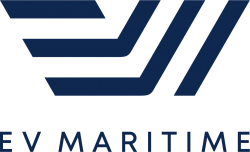 Michael Eaglen
Michael EaglenCo-founder and CEO
EV Maritime
New Zealand
The first zero emission vessels into the Auckland Transport ferry fleet will be two identical 200-passenger 25-knot battery electric fast ferries from EV Maritime, delivering in 2024. These and future vessels will be supported by a network of megawatt-level fast chargers to support high frequency commuter ferry operations. This presentation will summarize this project and draw parallels between the Auckland deployment and similar ferry systems around the USA.
13:50
San Francisco Bay’s Water Emergency Transportation Authority's transition to zero emission vessels
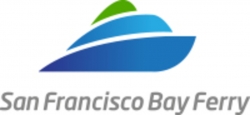 Tim Hanners
Tim HannersManager of operations and maintenance
San Francisco Bay Area Water Emergency Transportation Authority
USA
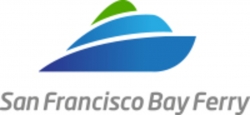 Chad Mason
Chad MasonSenior planner/project manager
San Francisco Bay Area Water Emergency Transportation Authority
USA
 Kaiya Levine
Kaiya LevineConsultant, energy engineering and power systems
Arup
USA
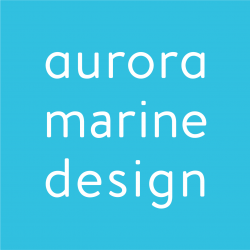 Connor Bennett
Connor BennettNaval architect
Aurora Marine Design
USA
San Francisco Bay’s Water Emergency Transportation Authority (WETA) provides an important means of transportation in the Bay Area and provides emergency services when support is required. To comply with new California Air Resources Board (CARB) regulations and continue to be a leader in the sector, WETA developed a Blueprint to transition their fleet of ferries to zero-emission vessels (ZEVs) by 2035. The Blueprint was funded through California Energy Commission (CEC) grants and led by Arup and Aurora Marine Design (AMD). The Blueprint focuses on the vessel-side analyses and terminal infrastructure requirements of electrifying the fleets. This presentation will review key findings, including optimal ferry routes, projected peak energy demands, and the impacts of interconnecting battery energy storage systems. The presentation will also review the current challenges and solutions that WETA is navigating with electrifying their fleet and infrastructure. This includes understanding space constraints at the terminals, grid capacity constraints, and optimal solutions for reducing time and costs associated with zero-emission fleet implementation.
14:45
Crowley's eWolf at Port of San Diego: the United States' first electric tug
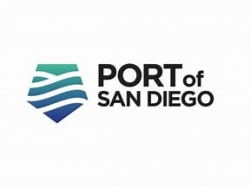 Dr Thomas MacLean
Dr Thomas MacLeanProgram director, policy and energy
Port of San Diego
USA
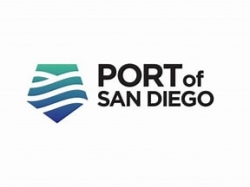 Zach Birmingham
Zach BirminghamSenior environmental specialist
Port of San Diego
USA
 Kelvin Ellis
Kelvin EllisAccount manager for the Port of San Diego
San Diego Gas and Electric
USA
 Paul Manzi
Paul ManziVP of ship assist and escort
Crowley Shipping
USA
Crowley's eWolf is a project at the Port of San Diego which includes an electric tugboat, microgrid, and landside charging infrastructure. This presentation brings together key members of the project team to discuss what it took to bring this innovative idea to reality. Thomas MacLean from Port of San Diego will direct the presentation. Paul Manzi from Crowley Shipping will speak about how the concept for the eWolf came to fruition. Zach Birmingham will provide the perspective of the Port, and Kelvin Ellis from the utility San Diego Gas and Electric will provide insight into utility considerations. Following the presentations, these technical experts and organizational representatives from the maritime, engineering, utility, and government sectors will get together and take questions from the audience and discuss this unique endeavor to deliver the United States' first electric tugboat.
15:35
How Long Beach Container Terminal plans to meet its Net Zero goals by 2030
 Bonnie Nixon
Bonnie NixonDirector of ESG and sustainability
Long Beach Container Terminal, Port of Long Beach
USA
The 2017 Clean Air Action Plan Update set the Port of Long Beach on the path to zero-emission goods movement, with a goal of transitioning terminal equipment to zero emissions by 2030 and on-road trucks by 2035. The Port is moving whilst ahead with six projects to demonstrate zero emissions equipment and advanced energy systems in Port operations. In this presentation Bonnie Nixon, the Director of Sustainability at the Port of Long Beach Container Terminal will set out the facts and figures as to what Long Beach Container Terminal has done and what it will do in order to meet its Net Zero goals by 2030.
16:00 - 17:00
Port and infrastructure projects - panel discussion
 Bonnie Nixon
Bonnie NixonDirector of ESG and sustainability
Long Beach Container Terminal, Port of Long Beach
USA
 Dr Thomas MacLean
Dr Thomas MacLeanProgram director, policy and energy
Port of San Diego
USA
 Tim Hanners
Tim HannersManager of operations and maintenance
San Francisco Bay Area Water Emergency Transportation Authority
USA
Aaron Katzenstein, deputy executive officer - Technology Advancement Office, South Coast Air Quality Management District, USA
Theater Two
Developments in ESS (day 1)
15:20 - 17:00
Moderator
 Bo Jardine
Bo JardineAdvisory partner
1852 Solutions
USA
15:20
Case study – retrofitting to hybrid-electric propulsion
 Guillaume Vileyn
Guillaume VileynSenior electricity and fire safety surveyor
Bureau Veritas Marine Inc
USA
A case study on retrofitting to hybrid-electric propulsion highlighting the considerations for ship owners and shipyards during the installation of battery systems on existing vessels. This includes existing spaces/arrangement modifications or additional battery containers on the vessel’s deck. This case study addresses the importance of risk mitigation and Bureau Veritas requirements for such vessel modifications.
15:45
Fire safety requirements for use of lithium-ion batteries in the marine and offshore industries
 Dr Mejdi Kammoun
Dr Mejdi KammounPrincipal engineer
American Bureau of Shipping
USA
This presentation will cover the American Bureau of Shipping (ABS) requirements for the use of lithium-ion battery (LIB) systems as power sources and cargo. Additionally, it will focus on the main approaches to fire safety in LIB systems for marine applications, which include prevention, detection, containment, suppression and emergency response.
16:10
Li-ion thermal runaway and quantifying the risk of explosion
 Kevin C White
Kevin C WhitePrincipal scientist
Exponent
USA
The increasing complexity and size of lithium-ion batteries and the destructive power of large lithium-ion battery packs severely challenges conventional failure analysis techniques. In this presentation we will explore advanced techniques for understanding failures in large lithium-ion battery packs, such as those used in marine electrification applications. The purpose is to quantify the risks through the lens of a failure analysis investigation conducted on a large, rack-based lithium-ion battery pack that suffered thermal runaway creating an air-fuel deflagration event that severely injured four first responders.
16:35
Ocean going potential of batteries
 Steven Henderson
Steven HendersonCEO and co-founder
Fleetzero
USA
Battery technology is advancing rapidly. Many preconceptions of their limitations for long-range marine use are based on decades old technology. In this conversation we will discuss the potential for long distance ocean going battery electric vessels along with the challenges, and means of addressing them.
Day 2 - Thursday, March 14, 2024
Theater One
Technology development and market perspectives
08:45 - 10:50
Moderator
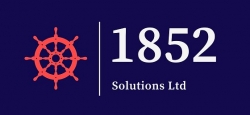 Carlos R Bertrand
Carlos R BertrandAdvisory partner
1852 Solutions
USA
08:45
Exploring the potential of battery-electric ships
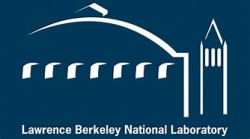 Dr Hee Seung Moon
Dr Hee Seung MoonPostdoctoral researcher
Lawrence Berkeley National Laboratory
USA
The United States’ ambitious greenhouse gas (GHG) emission reduction goals, along with targets set by the International Maritime Organization, create an important opportunity to explore battery-electric options for the shipping industry. Our research highlights adopting battery-electric shipping solutions can help achieve substantial emission reductions, ensure economic viability, and contribute to a more sustainable future in the U.S. maritime industry. Our findings show that electrifying 6,323 domestic ships under 1,000 gross tons could significantly reduce GHG emissions, achieving a 34-42% decrease in 2035 compared to a 2022 level. We estimate the annual electricity required by these ships to be 7.7 terawatt-hours. In 2035, 69-88% of the 6,323 battery-electric ships could become more economically viable if they covered 99% of their historical trip demand, thereby lowering the overall costs of electrifying these ships by 33%.
09:10
Autonomy and remote control on the eWolf electric tug
 Eileen Tausch
Eileen TauschSenior electrical engineer - research & development
Crowley Shipping
USA
 Drew Orvieto
Drew OrvietoSenior manager, passenger vessels, marine and ports
ABB Marine & Ports
USA
Crowley's trailblazing electric tug will be delivered with ABB technology to employ autonomous and remote-control functions for navigation, maneuvering, and propulsion. This presentation will provide insight into why this technology was selected for use on the eWolf electric tug, how the propulsion system architecture facilitates these functions, an update on implementation and regulatory activities to date, and a discussion on goals and future roadmap.
09:35
The role of hybrids on the path to decarbonization
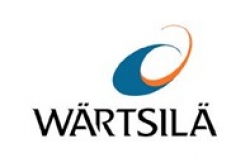 Dave Adams
Dave AdamsSenior sales manager
Wärtsilä
Canada
When evaluating vessel hybridization, it's essential to begin by examining three primary pathways to vessel decarbonization: reducing energy demand through vessel optimization, transforming energy with greater efficiency with hybridization or electrification, and adopting the use of alternative energy sources such as green fuels.
10:00
Blue-Collar Bellwethers: why electric is a win for workboats
 Nick Schoeps
Nick SchoepsChief technical officer
Photon Marine
USA
 Scott Canning
Scott CanningVP business development
Aqua Superpower
UK
By 2032, electric workboats are poised to make up nearly 12% of the $2.4B market globally. This presentation will explore the forcing-functions behind this trend, and solutions to this diverse market. The presentation will review data and lessons-learned from governments and municipalities, including a week-long trail with the New York Power Authority and demonstrations with the Canadian government and Rosborough Boats.
10:25
Advanced propulsion systems using magnetically geared transmission
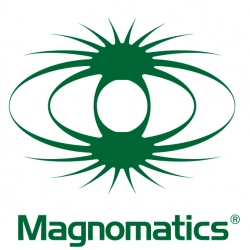 Dr Stuart Calverley
Dr Stuart CalverleyChief engineer
Magnomatics
UK
The presentation describes a novel magnetic transmission used in a new range of thrusters. The system gives optimised high-speed e-motor operation (compact and high efficiency) and magnetic gearing to provide low speed high torque output to the propulsor. The use of magnetic transmission to give a hermitically sealed system: deletes the shaft seal and eliminates leaks. The system operation and design is fully described and two production units (15kW/25kW rated at 6000m depth) are detailed.
Theater Two
Developments in ESS (Day 2)
08:45 - 10:00
Moderator
 Bo Jardine
Bo JardineAdvisory partner
1852 Solutions
USA
08:45
Leverage the latest in energy efficiency: evolving Energy Storage Systems
 Tor-Gunnar Hovig
Tor-Gunnar HovigSVP sales Americas
Corvus Energy
USA
Energy storage system (ESS) technology is rapidly advancing and there is no one-size-fits-all solution. Next generation ESS are expanding the range of electric-powered vessel operations and improving system efficiency, safety, and lifetime, and each ESS design must be customized to the specific vessel requirements. These are critical factors that vessel owners and operators must navigate as they decarbonize their fleets. This presentation provides insights to help address those challenges.
09:10
FLEXSHIP concept for vessels' electrification
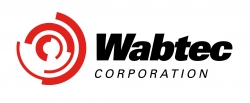 Guido Gommer
Guido GommerDirector/product manager charging applications
Wabtec Charging and Power Transfer
Germany
This presentation will offer attendees an overview of FLEXSHIP, an EU funded concept project consortium representing a multidisciplinary group composed of 16 partners from 9 countries including the UK. The project is aimed at the electrification of vessels by optimizing large battery electric power systems within fully battery electric and hybrid ships. The overall goal of FLEXSHIP is to develop and validate safe and reliable, flexible, modular, and scalable solutions for electrification of the waterborne sector. This includes the reliable design and development of modular battery packs; safe on-board integration; optimal design of EMS to maximize the operational flexibility and energy efficiency, and smart control for improved lifetime of the battery system and critical power components.
09:35
Energy storage for marine vessels: challenges and technological evolution
Vice president e-marine
Leclanché Norway AS
Norway
This presentation will offer a compelling perspective on energy storage for marine vessels in the context of sustainability imperatives and evolving regulatory frameworks. It will highlight the challenges the marine market will face and the opportunities offered by lithium-ion battery storage. A selection of case studies will be offered, with a focus on precise cell selection, water cooling and active safety features.
Theater Three
Megawatt Charging Workshop – workshop introduction and welcome remarks
09:30 - 09:45
This will be the first in a series of workshops for marine industry representatives and government stakeholders interested in the electrification of the marine industry and the development of a global high-power charging standard for marine applications, leveraging the Megawatt Charging Standard. The workshop will help build consensus and alignment around the need for wider international collaboration. This effort is made possible with funding support from the USDOT Maritime Administration’s Maritime Environmental Technical Assistance (META) Program. META partners with the maritime industry to navigate the most significant environmental challenges of the day.
09:30
Welcome
 James K Dumont
James K DumontDirector, grants
Crowley
USA
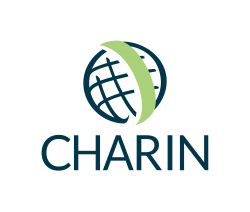 Christoph Stürmer
Christoph StürmerCEO CharIN Academy
CharIN
Germany
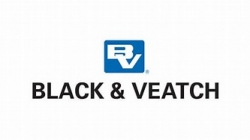 Paul Stith
Paul StithAVP global transportation initiatives
Black & Veatch
USA
Theater Three
Megawatt Charging Workshop – Session 1: State of the marine electrification industry
09:45 - 10:45
Overview of the state of the marine electrification market including the state of the Megawatt Charging System and other non-road industry usage. The presentation will also discuss the goals of the workshop and the next steps beyond the workshop. This session will include interactive surveys and facilitated exercises.
09:45 - 10:45
Panel Discussion
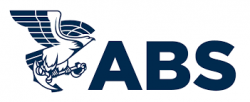 Veneela Ammula
Veneela AmmulaSenior engineer II, technology- electrical
American Bureau of Shipping
USA
 Syb ten Cate Hoedemaker
Syb ten Cate HoedemakerManaging director
Maritime Battery Forum
Netherlands
 Jim Andriotis
Jim AndriotisChief technology officer
Cavotec Group
USA
 Tim Hanners
Tim HannersManager of operations and maintenance
San Francisco Bay Area Water Emergency Transportation Authority
USA
Christoph Stürmer, CEO CharIN Academy, CharIN, Germany
10:45 - 11:15
Break
Theater Three
Megawatt Charging Workshop – Session 2: Regulatory drivers for marine electrification and solutions
11:15 - 12:15
This session will describe the regulatory drivers in California, the United States and abroad for marine electrification. The panel will feature representatives from relevant environmental government agencies, port authorities and harbor operators to describe the opportunities and challenges of marine electrification and the benefit of an interoperable open standard to support the transition.
11:15 - 12:15
Panel Discussion
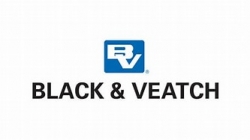 Cheshta Balwani
Cheshta BalwaniClean transportation solutions architect
Black & Veatch
USA
 Paul Manzi
Paul ManziVP of ship assist and escort
Crowley Shipping
USA
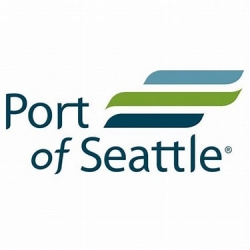 Lucian Go
Lucian GoEnvironmental program manager - maritime decarbonization
Port of Seattle
USA
 Dr Andrew Martinez
Dr Andrew MartinezZero emission infrastructure specialist
California Air Resources Board
USA
12:15 - 13:15
Lunch
Theater Three
Megawatt Charging Workshop – Session 3: Benefits of the Megawatt Charging System for the marine industry
13:15 - 14:15
This session will provide more details about the Megawatt Charging System (MCS) standard and why other on-road and off-road heavy-duty industries aligned around a common charging standard. It will also describe the process for the creation of MCS and what will be required to introduce something comparable to the marine industry.
13:15 - 14:15
Panel Discussion
 James K Dumont
James K DumontDirector, grants
Crowley
USA
 Paul Stith
Paul StithAVP global transportation initiatives
Black & Veatch
USA
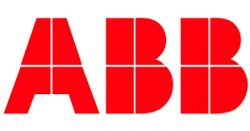 Kevin Andersen
Kevin AndersenTechnical solutions manager
ABB Inc - Marine & Ports
USA
 Mariano Rigotti
Mariano RigottiEV charging business developer
Amphenol Industrial Products Group
USA
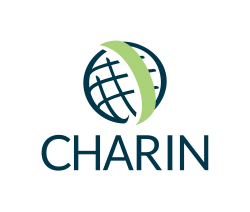 Semih Tetik
Semih TetikProject manager
CharIN
Germany
14:15 - 14:45
Break
Theater Three
Megawatt Charging Workshop – Session 4: Next steps to developing a robust marine electrification industry
14:45 - 15:45
This concluding session will focus on a facilitated discussion and group breakouts that will help determine the next steps for future activities, including in-person/virtual workshops and the development of an international task force for marine electrification standardization.
14:45 - 15:45
Discussion & Table Breakouts
 Christoph Stürmer
Christoph StürmerCEO CharIN Academy
CharIN
Germany
Paul Stith, AVP global transportation initiatives, Black & Veatch, USA
Theater One
Building and operating electric and hybrid vessels
11:10 - 12:00
Moderator
 Bo Jardine
Bo JardineAdvisory partner
1852 Solutions
USA
11:10
The realities of building and operating a hybrid/electric vessel
 Ron Wille
Ron WillePresident and COO
All American Marine Inc
USA
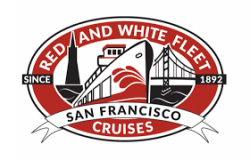 Joe Burgard
Joe BurgardManaging director and partner
Red and White Fleet
USA
This two-part extended presentation will take attendees through the process of planning, budgeting, specifying and building an electric vessel, and then the realities of operating one. In the first part, Ron Wille, president and COO of All American Marine, a leading manufacturer of vessels with hybrid-electric propulsion systems, will guide attendees through the major considerations: Assessing your current infrastructure and what you might need to upgrade it, the budgetary realities of building a hybrid versus diesel powered vessel, and the importance of being able to have an open dialogue with your chosen shipyard to convey your operational priorities. Having put the plan in place, the presentation will then look at specifying your vessel, how to consider the various architectures available and the role and selection of the integrator best suited to your needs. The presentation will then emphasize the most important piece of information a designer and shipyard can get: an accurate load profile and the problems and huge potential costs that may arise from inaccurate assessment. This first part of the presentation will conclude with a review of the various ESS (energy storage system) solutions.
Part two of the presentation will be given by Joe Burgard, president at Red and White Fleet, a sightseeing and charter tour company operating in the San Francisco Bay Area of California for over 130 years. In 2018 the company added the first aluminum-hulled, lithium-ion battery plug-in hybrid vessel built in the USA to its fleet. Now in operation for five years, Enhydra allows Joe to present the realities of that operation, give a case study of the real-world ROI, help attendees understand the routine maintenance items and, most valuably of all, explain what changes that operating experience would lead to if Red and White were to start planning another such vessel.
Theater Two
Developments in fuel cell technology
11:00 - 14:35
Moderator
 Carlos R Bertrand
Carlos R BertrandAdvisory partner
1852 Solutions
USA
11:00
The future of hydrogen power in maritime applications
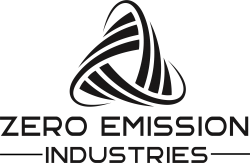 John Motlow
John MotlowChief strategy officer
Zero Emission Industries
USA
This presentation will focus on ZEI's journey in creating the first commuter ferry powered by hydrogen fuel cells, along with an examination of what ZEI's hydrogen power and fueling systems can provide for the future.
11:25
Unlocking the potential of ammonia for zero-emission shipping
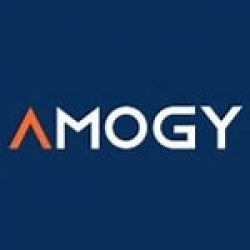 Abhimanyu Singh
Abhimanyu SinghSenior manager, business development and maritime sales
Amogy
USA
Ammonia primarily serves as a fertilizer-based material to enrich crops, but its applications extend far beyond agriculture. As an accessible, lower-cost, and more energy dense solution than liquid hydrogen and battery electrification, ammonia is gaining traction as an alternative fuel to decarbonize the hard-to-abate sectors, such as maritime shipping. This presentation will compare the pros and cons of ammonia to other alternative fuels. The presentation will also discuss Amogy’s progress in constructing the world’s first ammonia-powered vessel set to sail in 2024 and explore the pathway towards commercializing ammonia-based power solutions for the maritime industry.
11:50
Toward zero: comparing the greenhouse gas impact of methanol-to-hydrogen generators with diesel engines
 Kyle Taylor
Kyle TaylorEngineering manager
e1 Marine LLC
USA
This presentation provides a case study of a soon-to-be-constructed 2,000hp pusher boat, the Hydrogen One. It compared GHG and regulated emissions for the fuel-cell-powered option against Tier 3 diesel engines. E1 has pioneered methanol steam-reforming to generate hydrogen for fuel cells in maritime vessels. The study uses a comparative emissions model that was validated by Thetius, an independent maritime research specialist. The presentation will outline the practical insights gained, offering real-world emissions reduction solutions. Utilizing 48,000 hours of data from similar vessels, a 24-hour load profile mirroring Hydrogen One's expected operations was developed. Comparing fuel consumption and emissions, the results demonstrate the advantages of methanol-reforming with green methanol over diesel engines. Even with gray methanol, significant reductions in greenhouse gases and regulated emissions were observed.
12:15
The benefits of using fuel cells to simplify the design, construction and operation of electric and hybrid vessels
 Søren Kildedal
Søren KildedalTechnology solution director, marine
Advent Technologies
Denmark
This presentation will describe how the ability to install fuel cells late in the construction process benefits vessel designers and builders. Once installed, their redundancy allows performance to be maintained even in the result of unit failure and for the swap-out to be easily achieved. Along with the ease of servicing on board, this provides compelling reasons for their use in many marine electrification scenarios. A case study will demonstrate these benefits.
13:20
Extending zero-emission operations with energy storage & fuel cell systems
 Sveinung Odegard
Sveinung OdegardSVP business development fuel cell
Corvus Energy
USA
Combining energy storage together with fuel cells, plus a green fuel, such as hydrogen, takes zero-emission technology one step further. It provides an efficient solution to expand the range and flexibility of zero-emission operations and enables new emissions savings for longer-route and larger vessels that previously were not achievable. This presentation will outline benefits of the technology and share insights from the multi-year development and testing of a marine fuel cell system.
13:45
Hydrogen-based fuels for maritime decarbonization
 Johan Burgren
Johan BurgrenBusiness manager
PowerCell AB
Sweden
The presentation focuses on the use of various hydrogen-based fuels in fuel cell solutions. It covers the potential benefits and challenges of adopting these fuels, and discusses their efficiency, environmental impact and cost-effectiveness. Real-life examples of their application in ships and the need for infrastructure development and supportive regulations are emphasized. The goal is to advocate for a transition toward cleaner maritime transportation through hydrogen-based fuel cell technologies.
14:10
Development of a zero-emission hydrogen hybrid oceangoing research vessel at Scripps Institution of Oceanography – UC San Diego
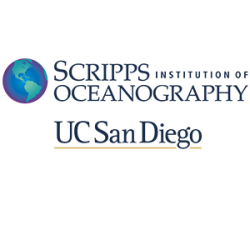 Dr Bruce Appelgate
Dr Bruce AppelgateAssociate director
Scripps Institution of Oceanography Ship Operations & Marine Technical Support
USA
The hybrid-hydrogen design of this new vessel represents an innovation in the maritime industry. Currently, conventional diesel engines on ships emit greenhouse gases and criteria pollutants. Development of this and subsequent zero-emission vessels is essential to the University of California’s Carbon Neutrality Initiative. This new vessel will feature an innovative hybrid propulsion system that integrates hydrogen fuel cells alongside a conventional diesel-electric power plant, enabling zero-emission operations. The design is scaled so the ship will be able to operate 75% of its missions entirely using liquid hydrogen fuel. For longer missions, extra power will be provided by clean-running modern diesel generators, with a plan to replace those with methanol when technically feasible, to eliminate fossil fuels from the vessel entirely. The vessel represents a major step in advancing California's pledge to reduce global climate risk while transitioning to a carbon-neutral economy.
Theater One
Integration and system design
12:45 - 14:25
Moderator
 Bo Jardine
Bo JardineAdvisory partner
1852 Solutions
USA
12:45
Vessel performance starts with the integrator
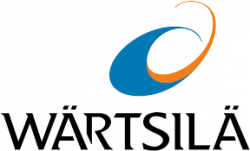 Joel Thigpen
Joel ThigpenGeneral manager, marine new build sales
Wärtsilä
USA
The emergence of electrical and hybrid systems transforms vessel performance, covering hull, on-board systems, shore facilities, and grids. The electrical integrator's vital role ensures seamless coordination and shapes overall system performance. This presentation spotlights evolving performance dynamics and the integrator's critical role. Notable projects, such as MV Medstraum (fully electric) and MV Buquebus (world's largest electric passenger vessel), will be featured. The integrator has a key role in shaping vessel performance encompassing the hull, on-board systems, shore facilities, and grid connections. A collaborative approach involving the integrator, designer, and operator consistently leads to the optimal solution. The integrator is best positioned to provide advice on solutions tailored for future growth.
13:10
Designing, integrating and implementing vessel retrofit projects
 Jan Klokk
Jan KlokkVP - sales
Norwegian Electric Systems
Norway
Owners and operators are evaluating what to do with the fleet of existing midlife vessels and one option is to retrofit. Retrofitting ESS onboard such a vessel could have a positive impact on the overall operational cost of the vessel in terms of reduced emissions, reduced running hours, increased fuel efficiency and lower maintenance costs. It could also allow the vessel to be powered by the shore grid, and in some cases short zero-emission runs can be achieved. This presentation will explore the scope, supply and considerations in designing, integrating and implementing a retrofit project. Different vessel types have diverse needs, and the presentation will touch upon how to use these various applications, and how they will integrate with the existing systems already installed on board and with the shore power systems.
13:35
Systems integration challenges for hybrid and fully electric vessels
 Peter van den Berg
Peter van den BergTechnical consultant power electronics
Astrolkwx
Netherlands
When electrical systems are expected to support power converters capable of integrating alternative sources, storage systems and battery storage with a range of voltages, frequencies and power levels, the electrical power requirements expand. As a result, challenges in system design and protection appear. In SMART and sustainable power grids, DC is the power distribution system of choice but cannot be safely deployed without the necessary protection. In this presentation, Peter van den Berg gives an overview of the challenges and solutions in system design and topologies such as closed bus tie, multi bus and ring systems. Also, challenges in standardization and regulations will be discussed. There is special attention to solid-state DC breaker technology. This technology plays a crucial role in protecting onboard DC grids against short circuit currents and power overload, as it’s capable of switching off within microseconds.
14:00
Marine propulsion unlocking hidden benefits beyond environmental compliance
 James Edwards
James EdwardsChief engineer
Helix
UK
The marine industry has been swift to embrace electrification, spurred on by environmental concerns, regulatory pressures, and a desire for quieter, cleaner vessels. Yet, what if a transition to electric propulsion offered more than just compliance with green mandates? This presentation will explore the untapped advantages waiting to be harnessed by boat designers and manufacturers, showing how these innovations not only revolutionize drivetrain design but grant freedom in shaping vessels of tomorrow.
Theater Two
Alternative fuels and energy sources for marine propulsion
14:40 - 17:00
Moderator
 Bo Jardine
Bo JardineAdvisory partner
1852 Solutions
USA
14:40
New – Maritime alternative energy for the future
 Alyssa Malcomson
Alyssa MalcomsonProgram manager
US Department of Homeland Security, Science & Technology Directorate
USA
 Laura Boyd
Laura BoydSenior program analyst
US Department of Homeland Security, Science & Technology Directorate
USA
This presentation will provide a background on government and DHS interest in alternative energy for maritime assets. It will also discuss our recent collaboration with HSWERX, a non-profit that collaborates with the government on alternative energy for maritime assets. Lastly, we will detail DHS’s requirements for alternative energy for maritime assets and present an overview of the selected alternative energy technology DHS is investing in.
15:05
New - Green corridors and zero emission fuels
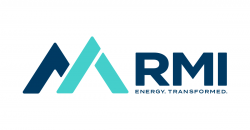 Andrew Waddell
Andrew WaddellSenior associate, climate-aligned industries
Rocky Mountain Institute
USA
Last year, the IMO released an ambitious strategy to cut global shipping emissions, including a 2030 target for zero-emission fuel uptake. Regional policies and subsidies are further accelerating shipping decarbonization. Shipowner/operators are responding with mounting orders for methanol and ammonia vessels, the first of which have been delivered. Still, uncertainty around future fuel choices, costs, and infrastructure, as well as a disaggregated value chain, make for a challenging environment. Green Corridors tackle this uncertainty by solving for a specific shipping lane, enabling coordination across the value chain to plan and execute the most feasible path to zero emission fuel deployment.
15:30
New - Sailing towards net-zero: why and how?
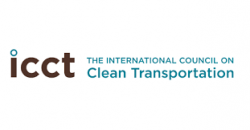 Xiaoli Mao
Xiaoli MaoLead
The International Council on Clean Transportation (ICCT)
USA
In this presentation, Xiaoli Mao, Marine Program Lead of The International Council on Clean Transportation discusses how they use real world data and techno-economic analysis to help the shipping industry move towards decarbonization in a Paris-aligned pathway. She will also provide some ideas to prioritize the choice of fuel and propulsion technologies.
15:55
New - Assessing alternative fuels
 Carlos R Bertrand
Carlos R BertrandAdvisory partner
1852 Solutions
USA
This presentation consists of an update on maritime alternative fuels as a pathway to achieve a more sustainable global shipping industry. It will discuss the opportunities and challenges in implementing alternative fuels within the given timeline defined by the IMO (International Maritime Organization).
The model selection criteria were based on their relevance to the maritime shipping business, mainly attributed to their roles in ship classification and registry. Current findings indicate that the success of alternative fuels depends upon various factors related to technology readiness, including supply chain robustness, infrastructure preparedness, financial conditions, and most acutely acceptance of emerging technologies by maritime industry professionals and leaders.
16:20 - 17:00
Panel discussion
 Carlos R Bertrand
Carlos R BertrandAdvisory partner
1852 Solutions
USA
 Andrew Waddell
Andrew WaddellSenior associate, climate-aligned industries
Rocky Mountain Institute
USA
 Xiaoli Mao
Xiaoli MaoLead
The International Council on Clean Transportation (ICCT)
USA
 Alyssa Malcomson
Alyssa MalcomsonProgram manager
US Department of Homeland Security, Science & Technology Directorate
USA
Michael Complita, principal in charge - VP strategic expansion, Elliott Bay Design Group, USA
Theater One
Modeling, testing and validation
14:40 - 15:55
Moderator
 Dr J. Wayne Miller
Dr J. Wayne MillerAdjunct professor
University of California, Riverside
USA
14:40
Preventing blackouts through early power system validation
 Sarah Whiteford
Sarah WhitefordFounding director
OneStep Power Solutions
USA
Adopting hybrid and electric propulsion introduces new validation challenges. This presentation emphasizes how beginning validation early can prevent blackouts and budget overruns for complex marine projects. Using a recent hybridization case study, the presentation will explain how early engagement with a validation partner supported the design and delivery phase of a project and identified integration flaws and implemented control system and hardware corrections pre-delivery before delivery preventing subsequent blackouts. Attendees at this presentation will learn best practices for the validation process, including parallel design and test planning activities. Following the case study, practical recommendations for early engagement will be provided.
15:05
How to use CHIL for development and operational support.
 Matt Baker
Matt BakerVice president of grid modernization
Typhoon HIL Inc
USA
This presentation will explain the use of CHIL in the development of ABBs Azipods and Drives. It will use real world examples of the challenges and benefits involved.
15:30
How vessel operators can instantly project fuel cost savings and environmental benefits of converting a vessel to hybrid propulsion
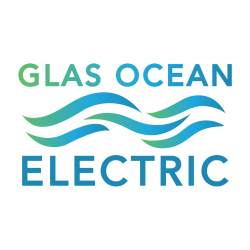 Dr Juliano Franz
Dr Juliano FranzSenior engineer
Glas Ocean Electric
Canada
This presentation will describe a use case for a marine data collection solution for voyage feedback and logging. It combines a mobile application and an in-house developed sensor hub. The mobile app allows vessel owners and operators instant access to real-time data on fuel costs and emissions. It provides them with options to optimize their performance and reduce fuel consumption while minimizing their environmental footprint. The optional sensor hub can gather high-resolution data from standard and custom marine sensors. The solution is called PerforMarine™ and with-it vessel operators can project the fuel cost savings and emission reduction benefits of converting a vessel to hybrid propulsion.
Theater One
Policy, regulation and funding – panel discussion
16:00 - 17:00
Moderator
 Teresa Bui
Teresa BuiClimate policy director
Pacific Environment
USA
16:00 - 17:00
Regulation, funding and infrastructure - panel discussion
 James K Dumont
James K DumontDirector, grants
Crowley
USA
 Ian MacMillan
Ian MacMillanAssistant deputy executive officer - planning, rule development and implementation
South Coast Air Quality Management District
USA
 Dean Kunesh
Dean KuneshEV customer programs - clean energy transportation
Pacific Gas and Electric Company
USA
 Eric Brown
Eric BrownAir pollution specialist
California Air Resources Board
USA
Moderators
Carlos R. Bertrand
 Carlos R Bertrand
Carlos R BertrandAdvisory partner
1852 Solutions
USA
Teresa Bui
 Teresa Bui
Teresa BuiClimate policy director
Pacific Environment
USA
Bo Jardine
 Bo Jardine
Bo JardineAdvisory partner
1852 Solutions
USA
Aaron Katzenstein
 Dr Aaron Katzenstein
Dr Aaron KatzensteinDeputy executive officer - Technology Advancement Office
South Coast Air Quality Management District
USA
